Special Report
How New Jersey's Job Market Compared to the US Over the Last 47 Years
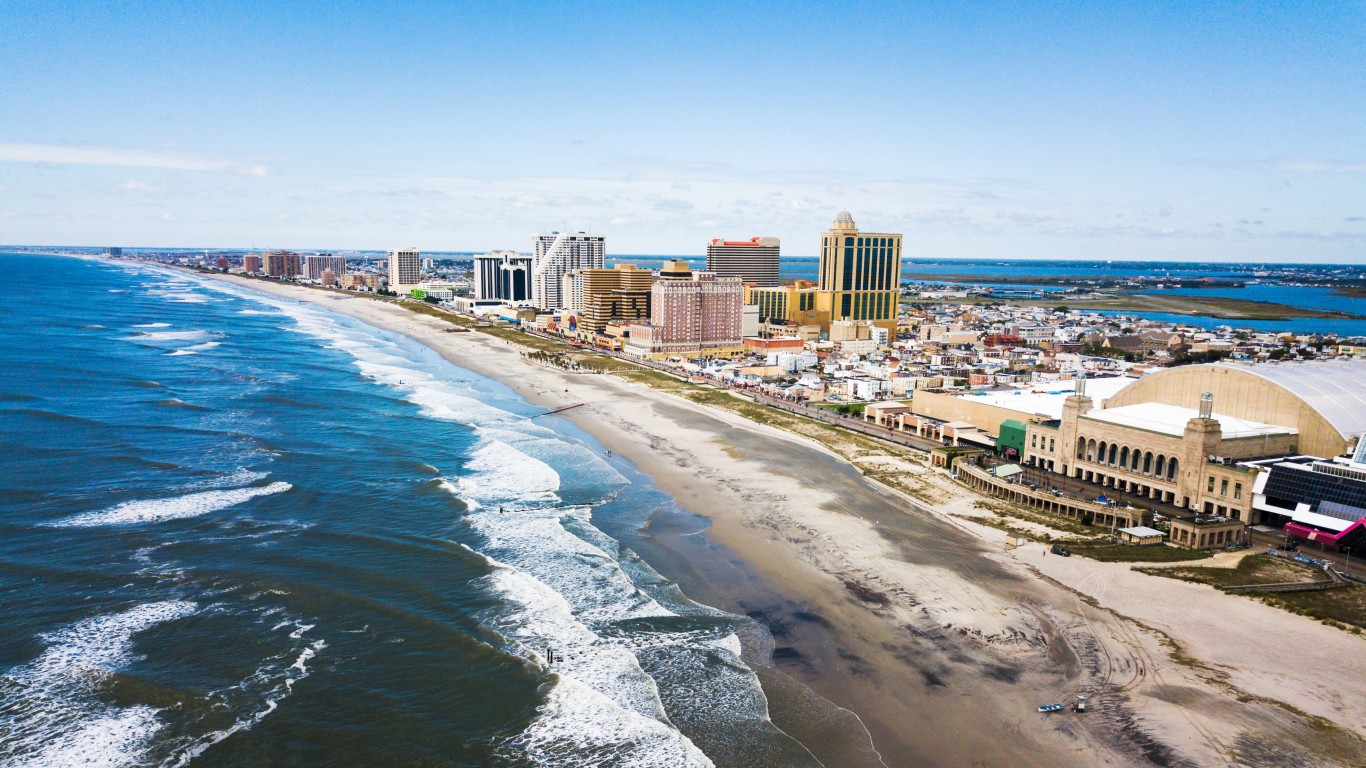
Published:

In an era of economic uncertainty, the U.S. job market remains resilient. After falling to 3.7% in November 2023, the national unemployment rate has been below 4% for 22 consecutive months, the longest streak in over 50 years.
Of course, if history is any guide, much of the economy is subject to boom and bust cycles — and the job market is no exception. Since the mid-1970s, the average annual unemployment rate in the U.S. has fluctuated between 3.6% and nearly 10%, according to the Bureau of Labor Statistics.
These same cyclical patterns are also evident in New Jersey, where the job market is supported largely by the professional and scientific and retail trade industries. The annual unemployment rate in the state was 3.7% in 2022, closely in line with the state’s lowest recorded annual jobless rate of 3.6%. However, conditions for job seekers have not always been so favorable.
According to historical BLS data going back to 1976, the annual jobless rate has been as high as 10.4% in New Jersey. More than once, unemployment in the state has either matched or come close to that peak.
This is how New Jersey’s job market has changed in each of the last 47 years.



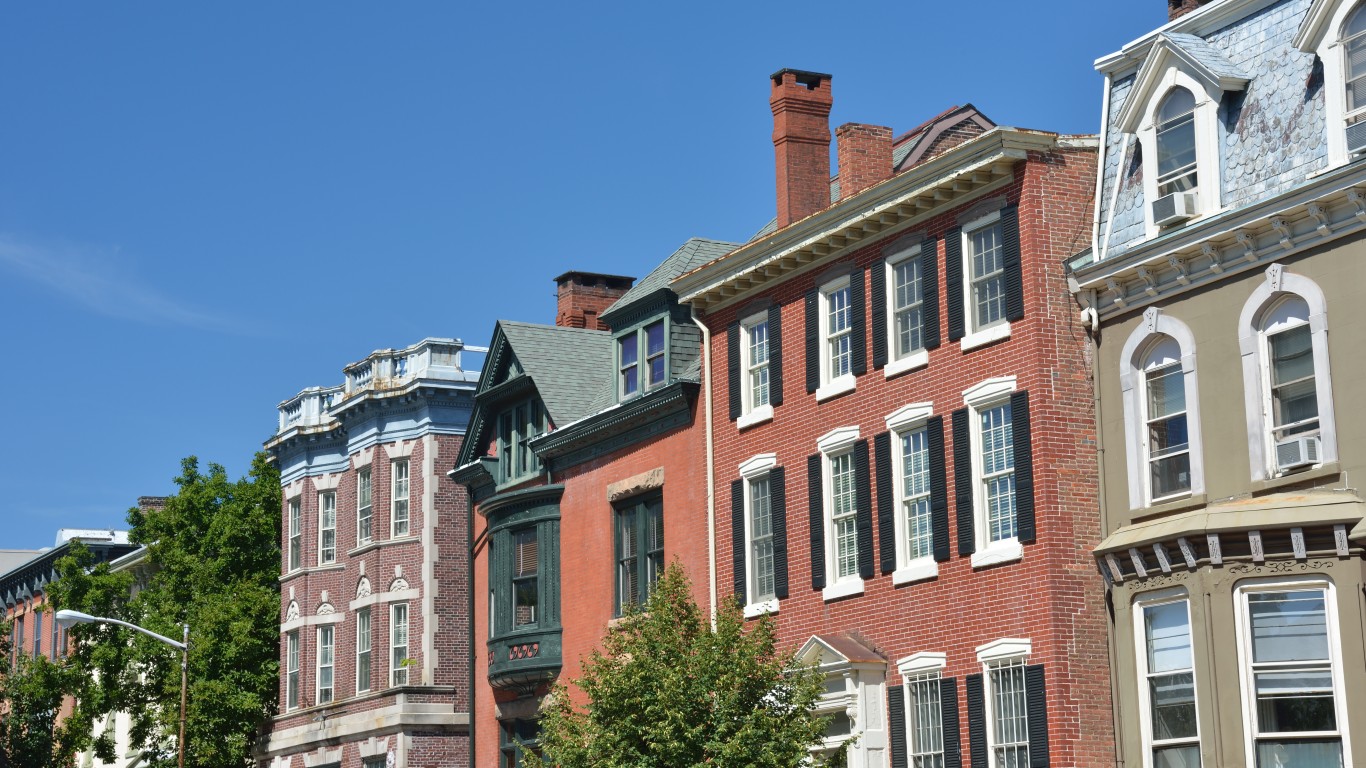

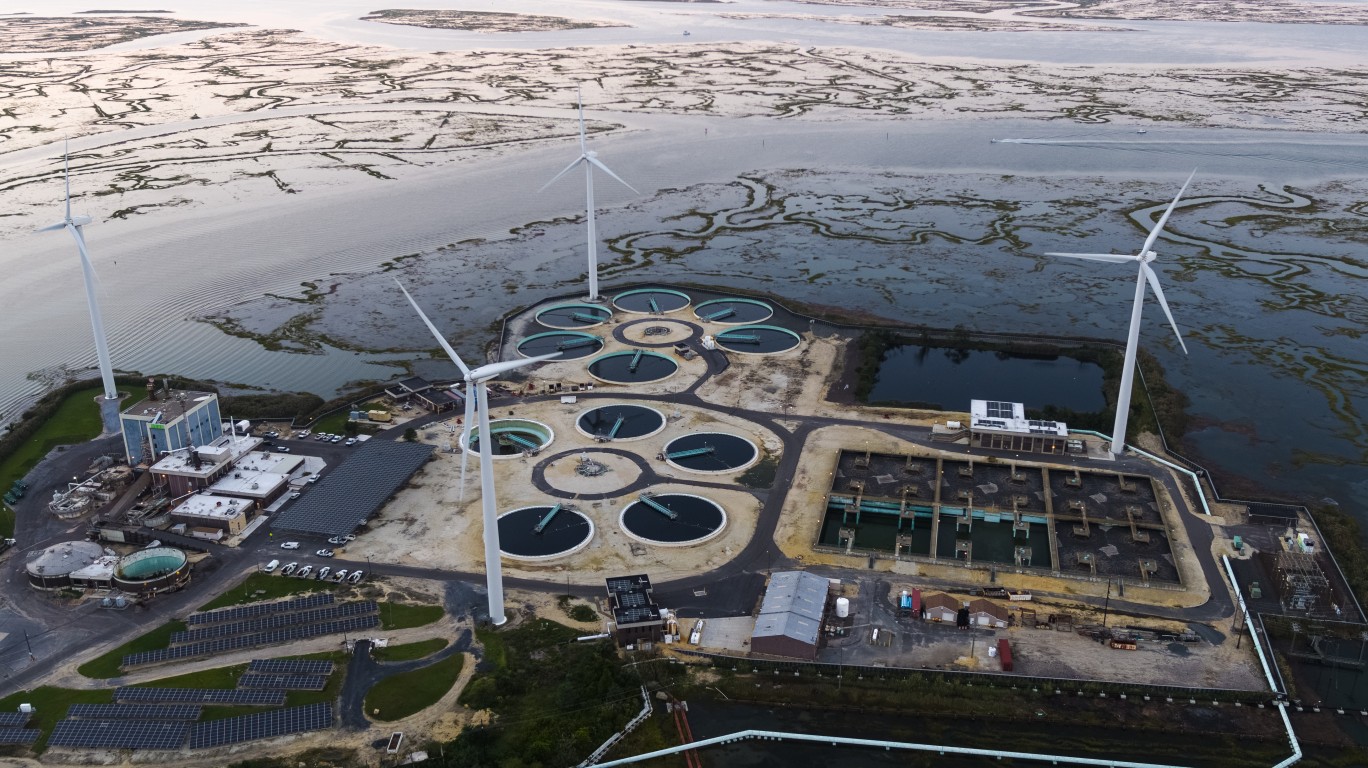
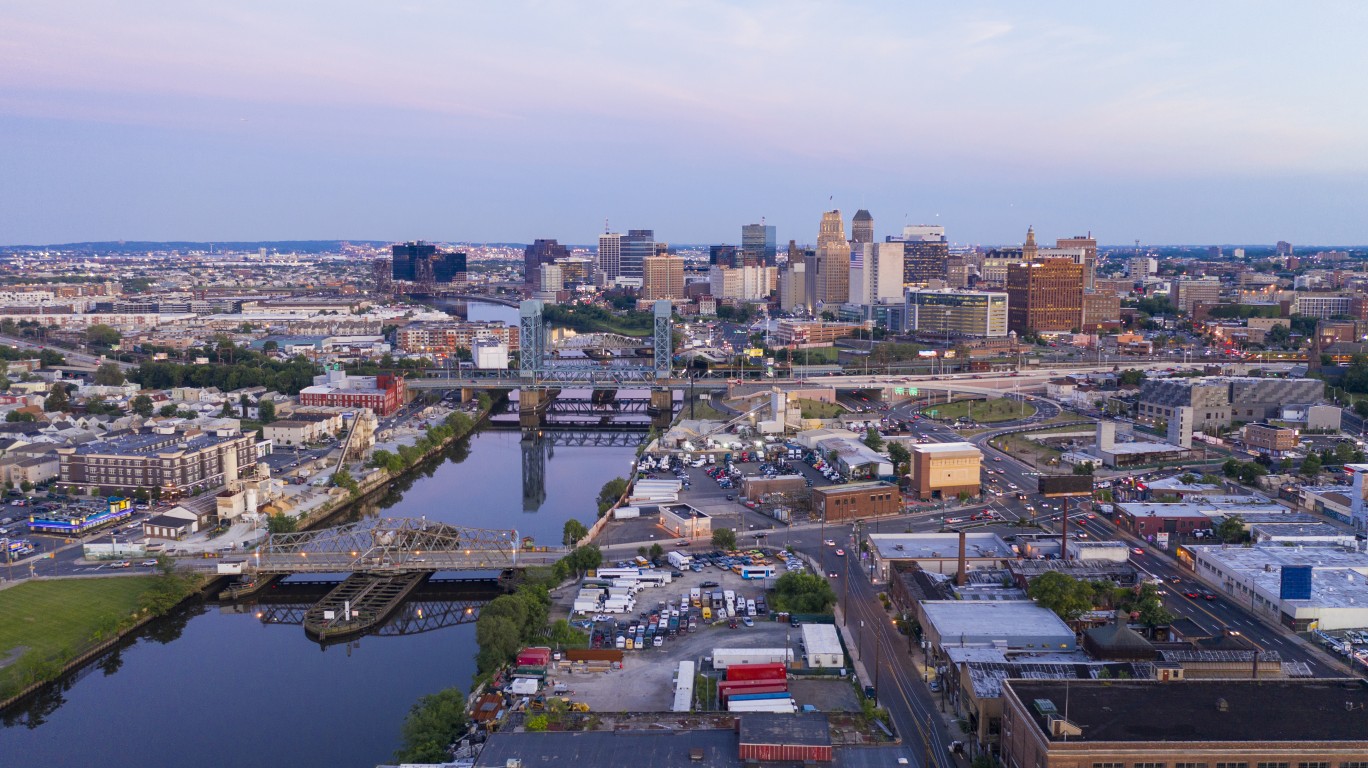








































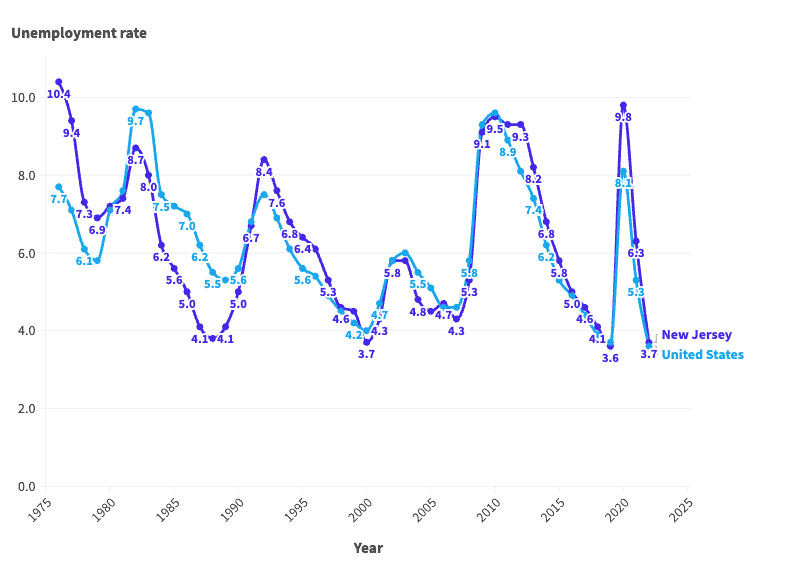
| Year | New Jersey unemployment rate | U.S. unemployment rate |
|---|---|---|
| 1976 | 10.4 | 7.7 |
| 1977 | 9.4 | 7.1 |
| 1978 | 7.3 | 6.1 |
| 1979 | 6.9 | 5.8 |
| 1980 | 7.2 | 7.1 |
| 1981 | 7.4 | 7.6 |
| 1982 | 8.7 | 9.7 |
| 1983 | 8.0 | 9.6 |
| 1984 | 6.2 | 7.5 |
| 1985 | 5.6 | 7.2 |
| 1986 | 5.0 | 7.0 |
| 1987 | 4.1 | 6.2 |
| 1988 | 3.8 | 5.5 |
| 1989 | 4.1 | 5.3 |
| 1990 | 5.0 | 5.6 |
| 1991 | 6.7 | 6.8 |
| 1992 | 8.4 | 7.5 |
| 1993 | 7.6 | 6.9 |
| 1994 | 6.8 | 6.1 |
| 1995 | 6.4 | 5.6 |
| 1996 | 6.1 | 5.4 |
| 1997 | 5.3 | 4.9 |
| 1998 | 4.6 | 4.5 |
| 1999 | 4.5 | 4.2 |
| 2000 | 3.7 | 4.0 |
| 2001 | 4.3 | 4.7 |
| 2002 | 5.8 | 5.8 |
| 2003 | 5.8 | 6.0 |
| 2004 | 4.8 | 5.5 |
| 2005 | 4.5 | 5.1 |
| 2006 | 4.7 | 4.6 |
| 2007 | 4.3 | 4.6 |
| 2008 | 5.3 | 5.8 |
| 2009 | 9.1 | 9.3 |
| 2010 | 9.5 | 9.6 |
| 2011 | 9.3 | 8.9 |
| 2012 | 9.3 | 8.1 |
| 2013 | 8.2 | 7.4 |
| 2014 | 6.8 | 6.2 |
| 2015 | 5.8 | 5.3 |
| 2016 | 5.0 | 4.9 |
| 2017 | 4.6 | 4.4 |
| 2018 | 4.1 | 3.9 |
| 2019 | 3.6 | 3.7 |
| 2020 | 9.8 | 8.1 |
| 2021 | 6.3 | 5.3 |
| 2022 | 3.7 | 3.6 |
The average American spends $17,274 on debit cards a year, and it’s a HUGE mistake. First, debit cards don’t have the same fraud protections as credit cards. Once your money is gone, it’s gone. But more importantly you can actually get something back from this spending every time you swipe.
Issuers are handing out wild bonuses right now. With some you can earn up to 5% back on every purchase. That’s like getting a 5% discount on everything you buy!
Our top pick is kind of hard to imagine. Not only does it pay up to 5% back, it also includes a $200 cash back reward in the first six months, a 0% intro APR, and…. $0 annual fee. It’s quite literally free money for any one that uses a card regularly. Click here to learn more!
Flywheel Publishing has partnered with CardRatings to provide coverage of credit card products. Flywheel Publishing and CardRatings may receive a commission from card issuers.
Thank you for reading! Have some feedback for us?
Contact the 24/7 Wall St. editorial team.